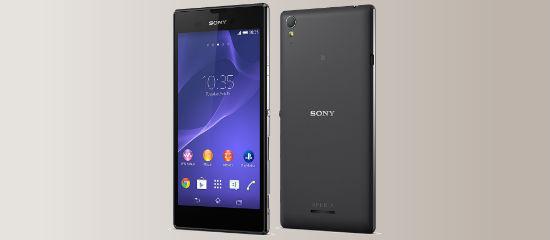Sony Xperia T3, an ultra thin device accessible to people with vision disabilities
Thursday, 19 February, 2015

The Sony Xperia T3 is a mid-range ultra thin elegant smartphone that includes accessibility features that render it suitable for people with vision, hearing, dexterity disabilities, and poor comprehension skills. We were able to review this device thanks to a loan by Orange.
Powered by Android 4.4 (KitKat) the device measures 150.7 x 77 x 7 mm and weights 148 grams. It comes with an IPS LCD 5.3-inch display with 720 x 1280 pixels resolution. It also packs a primary 8 MP camera with autofocus and LED flash, and a secondary 1.1 MP camera for videocalls.
The handset comes with NFC technology, Wi-Fi direct, DLNA and A-GPS.
Accessibility review
Vision
The Xperia T3 is suitable for blind people. It includes a version of TalkBack that reads these users through most of the available visual content. However, a minor problem observed was that if the text of an icon is abbreviated, the screen reader will read it just as it is. It will not convert it into full words when reading it out loud. This can cause confusion in some users.
This handset is also adequate for people with low vision. The built-in app magnification gestures will allow them to zoom in or out the content by tapping the screen three times with one finger. In addition, these users will be able to customize the screen brightness and adapt it to environmental light conditions.
An interesting feature included that would enhance the experience of color blind people is “White balance” that allows customizing background colors on the display.
Hearing
The Xperia T3 has a hearing aid compatibility rating of M4 and T4. It also supports instant messaging and videocalls. The phone includes additional settings that might improve intelligibility for hard of hearing users. For instance, the suppress background noise option, that reduces background noises during a phone call; the speaker voice enhancement option that improves the quality of incoming sounds and voices, and the slow talk option that slows down the speech of the other calling party.
Dexterity skills
People with poor dexterity skills may be able to use this device. The predictive text feature works as expected and the touching area of icons is large enough to allow a precise touch. Additionally, physical buttons are easy to press.
A barrier observed was that the screen time out cannot be deactivated. The longest time allowed is one hour. This can pose problems for some users with dexterity disabilities.
The Xperia T3, however, is unsuitable for people with little or no dexterity skills. Although it includes Google Now a voice recognition feature that comes inbuilt in Android devices that works well enough, it is still insufficient for these users. The app is capable of opening the Settings menu upon command but the user has to touch the screen to continue, and this can be problematic for some users with dexterity disabilities.
Additionally, controlling the device with assistive devices such as mouth sticks or head wands it is not possible. These users will not be able to turn the device on and off.
Comprehension skills
The Xperia T3 can be useful for people with comprehension issues. Icons comply with accessibility standards and the devices allow customizing the menu options.
However, the set up guide is insufficient. It prompts users to adjust Wi-Fi settings or to connect to social networks but it does not provide instructions on how to do it. This can be problematic for users with memory issues or that lack the necessary technical knowledge to handle the device on their own.
For more information about accessibility in Xperia T3, please consult the full accessibility report available in Amóvil.
Rate this new:
Accessible mobile search assistant
Amóvil helps you identify mobile devices that accommodate your personal preferences. Select your profile.





Leave your comment: